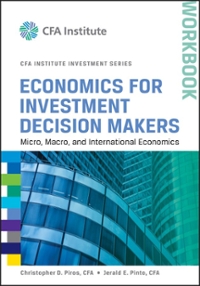



The following information relates to Questions 2936 Doris Honor is a securities analyst with a large wealth management firm. She and her colleague Bill Smith are addressing three research topics: how investment fund characteristics affect fund total returns, whether a fund rating system helps predict fund returns, and whether stock and bond market returns explain the returns of a portfolio of utility shares run by the firm. To explore the first topic, Honor decides to study US mutual funds using a sample of 555 large-cap US equity funds. The sample includes funds in style classes of value, growth, and blend (i.e., combining value and growth characteristics). The dependent variable is the average annualized rate of return (in percent) over the past five years. The independent variables are fund expense ratio, portfolio turnover, the natural logarithm of fund size, fund age, and three dummy variables. The multiple manager dummy variable has a value of 1 if the fund has multiple managers (and a value of 0 if it has a single manager). The fund style is indicated by a growth dummy (value of 1 for growth funds and 0 otherwise) and a blend dummy (value of 1 for blend funds and 0 otherwise). If the growth and blend dummies are both zero, the fund is a value fund. The regression output is given in Exhibit 1. 1-Statistic 8.0551 -6.5039 1.0777 0.0017 2.3976 -0.9580 0.4100 -2.6279 12.9185 3.0611 MSS 89.2712 2.8995 As a second research project, Honor wants to test whether including Morningstar's rating system, which assigns a one-through five-star rating to a fund, as an independent variable will improve the predictive power of the regression model. To do this, she needs to examine whether values of the independent variables in a given period predict fund return in Quantitative Investment Analysis 444 EXHIBITI Multiple Regression Output for Large-Cap Mutual Fund Sample Coefficient Standard Error Intercept 10.9375 1.3578 Expense ratio (%) -1.4839 0.2282 Portfolio turnover (96) 0.0016 In (fund size in $) 0.1467 0.0612 Manager tenure (years) -0.0098 0.0102 Multiple manager dummy 0.0628 0.1533 Fund age (years) -0.0123 0.0047 Growth dummy 2.4368 0.1886 Blend dummy 0.5757 0.1881 ANOVA DF SS Regression 8 714.169 Residual 546 1583.113 Total 554 2297.282 Multiple R 0.5576 0.3109 Adjusted R 0.3008 Standard error (%) 1.7028 Observations 555 Based on the results shown in Exhibit 1, Honor wants to test the hypothesis that all of the regression coefficients are equal to zero. For the 555 fund sample, she also wants to compare the performance of growth funds with the value funds. Honor is concerned about the possible presence of multicollinearity in the regression She states that adding a new independent variable that is highly correlated with one or more independent variables already in the regression model, has three potential consequences: 1. The R is expected to decline. 2. The regression coefficient estimates can become imprecise and unreliable. 3. The standard errors for some or all of the regression coefficients will become inflated. Another concern for the regression model (in Exhibit 1) is conditional heteroskedasticity, Honor is concerned that the presence of heteroskedasticity can cause both the F-test for the coefficients to be unreliable. She runs a regression of the squared residuals from the model in overall significance of the regression and the r-rests for significance of individual regression Exhibit 1 on the eight independent variables, and finds the R is 0.0669. the model: rating of each fund. Chapter 8 Multiple Regression 445 . Method 1: Add an independent variable that has a value equal to the number of stars in the Method 2: Add five dummy variables, one for each rating. Method 3: Add dummy variables for four of the five ratings. As a third research project, Honor wants to establish whether bond market returns (proxied by returns of long-term US Treasuries) and stock market returns (proxied by returns of the S&P 500 Index) explain the returns of a portfolio of utility stocks being recommended to clients . Exhibit 2 presents the results of a regression of 10 years of monthly percentage total returns for the utility portfolio on monthly total returns for US Treasures and the S&P 500. EXHIBIT 2 Regression Analysis of Utility Portfolio Returns Coefficient Standard Error p-Value Intercept 0.7641 US Treasury










